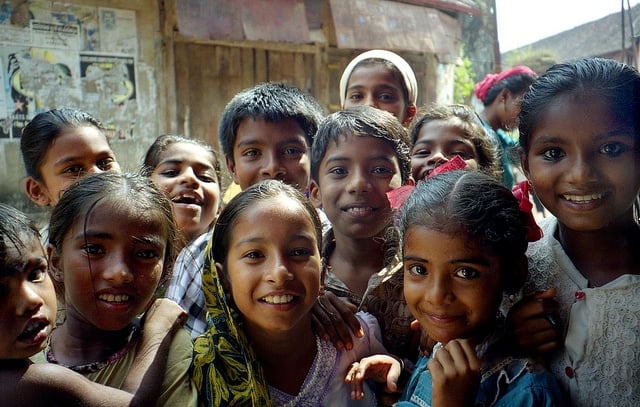
by World Moms Blog | Aug 28, 2014 | 2014, Awareness, Being Thankful, Childhood, Cultural Differences, Culture, Domesticity, Education, Eye on Culture, Family, Grandparent, Guest Post, Home, India, International, Kids, Life Lesson, Motherhood, Nutrition, Parenting, Relationships, Traditions, World Motherhood, Younger Children
 Motherhood is one of the most beautiful experiences of a woman’s life. Raising children makes life full. I am raising my children in India and I feel that the environment in India helps a lot in inculcating a strong set of values.
Motherhood is one of the most beautiful experiences of a woman’s life. Raising children makes life full. I am raising my children in India and I feel that the environment in India helps a lot in inculcating a strong set of values.
I read a lot about the many ways children are raised in various parts of the vast Indian subcontinent. Here are some of the enriching reasons I find raising a child in India so wonderful:
1. Family Help: India is a country where the joint family system is prevalent. Children grow up having a lot of fun surrounded by generations of Grandparents, Uncles, Aunts and Cousins. This helps the child in her personal growth and instills great concepts like teamwork and adjusting to different kinds of people, with different mindsets. It also helps a child understand how to receive and give unconditional love.
Sadly, the joint family is breaking up nowadays and giving way to nuclear families. The nuclear family comprises of just the husband, wife and children. Sometimes, the husband’s parents come to stay. This helps build a strong bond between the children and the grand parents, which should be encouraged. The child will learn to respect traditional values which are an integral part of the Indian social fabric.
2. Learning to Respect Your Elders: Indian children are taught to respect their elders and extended family at a young age. Being around so many family members, children learn to show respect and love to one and all when they grow up. Some communities in India make it compulsory for the young people to touch the feet of the elders as the mark of reverence.
This custom is rarely found in any other culture across the world. This custom is instilled in the child’s mind from a very young age and it becomes second nature. This custom hasn’t changed even after western ideas and practices stealthily crept into India.
3. Kids Are Taught How to Save: Children in India are taught to save and not spend unnecessarily. Due to the conservative economy, Indian children learn at a very young age to prioritise their expenses. They learn to buy things which will give them value for money.
Nowadays many banks offer the option to open minor accounts for very small children. Instead of having children save their pocket money in piggy banks, they can save it in real banks. This teaches the child banking procedures at a very early age. Children can even maintain a separate copy for calculating the total expenditure. This will teach the child that it is not good to waste money.
4. Family Values: Children are inculcated with strong family values as they grow up among numerous family members. These family values help develop strong moral fiber. In the long run, they help in creating a strong personality which helps in their growth.
5. Character Development: Character defines how the child leads a holistic life. Parents in India work hard on character building for their child. Since all parents’ desire that their child grows up to become an honest and good human being.
6. Spiritual Discipline: Indian children are raised with enormous spiritual discipline. India is the land for spiritual growth and developing the spiritual qualities in a child helps him/her grow up to be a better individual. Children are taught about the importance of religion and customs. They are also taught to respect other religions as well, since the common idea of all religion is to achieve peace, moral strength and happiness.
7. Freedom When They Play: There is no requirement for an organized play time. A child will always find a group of children playing outside his house. So they can always find fun. They can step out any moment and experience a joyous playtime. Open spaces or children’s parks are still there and are not encroached by developmental activities and high rises.
8. Sharing and Caring: There is a lot of sibling bonding in Indian families. Parents teach children tolerance towards each other, love and patience. By sharing and caring for each other, this turns them into well-adjusted human beings.
9. Celebrating Traditions: India has one of the richest cultures which dates back more than 5000 years. So India is a land of festival and colors, cliché as it may sound, it is true. These celebrations are elaborate. All the kids are involved in the celebration of the festivals with the other children in the community. The children celebrate the festivals with their families and extended families.
10. Healthy Eating Habits: Emphasis is laid on eating healthy food. Children are allowed to eat junk food once in a while, but mothers cook at home. They are happy to feed the children with home cooked food. This makes the child health conscious. Mothers teach their children to choose healthy fresh fruits and vegetables. This also increases their knowledge about what is good for them.
The above stated facts hold true for a small portion of the Indian population, as the phrase goes ‘the privileged few’. Economically, India has progressed considerably in the last 60 years. The bigger picture, however, is quite different: a farmer hangs himself from a tree because he cannot provide for his family; a child is shunned from temples and public places due to his lower caste label; the rampant poverty in villages and lack of health amenities lead to reduced life expectancy; more children are seen carrying bricks and working in factories than in classrooms. These are children who don’t have access to formal education at all.
But for increasingly more kids, growing up in India is a blissful experience which helps them develop into amazing individuals. The calmness of spirit and the enriching environment in India is what gives these children an opportunity to explore life and themselves. The liveliness of the child is based on the amazing cultural forum that the Indian child inherits.
In contrast, malnourished children peddle the streets and somehow make a living. They are deprived of things that my child claims as basic rights. We have small children selling chai when they should be drinking a warm glass of milk instead. Yet from children like these, a leader has emerged – Narendra Modi. The contradictions and ironies of my country keep me enthralled. I trudge forward in earnest hope that my child will triumph in all spheres of her life.
Also, the technological development and fast paced life have made us so busy that we are finding less and less time for each other but still Indians never forget to smile at one another. Children brought up in India will never lose heart, since they have learned to struggle and attain victory in all fields of life. But to make that happen, we need to remember the wisdom Dr. Seuss imparted:
“Unless someone like you cares a whole awful lot, nothing is going to get better. It’s not.” — The Lorax
The image used in this post is credited to Ryan Ready. It holds a Flickr Creative Commons attribution license.
This is a first-time, guest post from Aradhana, a mother in India. Aradhana also is a passionate writer, who focuses on topics like yoga, wellness, health and lifestyle. She has contributed posts to Natural News, Wiki How, MomJunction, and Elephant Journal. Through her writings, she hopes to motivate people to develop healthy habits and adopt natural ways of living to achieve sound health.
World Moms Blog is an award winning website which writes from over 30 countries on the topics of motherhood, culture, human rights and social good. Over 70 international contributors share their stories from around the globe, bonded by the common thread of motherhood and wanting a better world for their children.
World Moms Blog was listed by Forbes Woman as one of the "Best 100 Websites for Women 2012 & 2013" and also called a "must read" by the NY Times Motherlode in 2013. Our Senior Editor in India, Purnima Ramakrishnan, was awarded the BlogHer International Activist Award in 2013.
More Posts

by Martine de Luna (Philippines) | Aug 21, 2014 | 2014, Being Thankful, Domesticity, Life Lesson, Motherhood, Parenting, Philippines, Pregnancy, World Motherhood
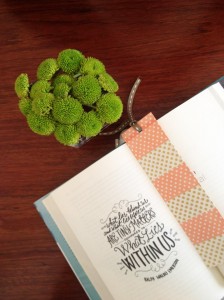 Hello, world moms everywhere!
Hello, world moms everywhere!
Wow, it’s been quite a blogcation, hasn’t it? In other parts of the world, it’s been a long and lazy summer, but for us here in the Philippines, it’s been a wet, sometimes troublesome monsoon season. Earlier in July, one of the worst typhoons hit the city of Manila (where I live), Typhoon Rammasun (called “Typhoon Glenda” by Filipinos). Several of my friends were affected; some even lost parts of their home, roofs, belongings. Others had no electricity for days, some as long as a week.
Yes, it was a difficult July for all of us here in my country. But thankfully, somehow we are alright. If you look around Manila now, there are still signs of damage. However, you will also see the smiles of our people, redolent with possibilities. Despite a harrowing monsoon season, our nation chugs on. Not without inconveniences, of course, but we manage.
I don’t know, but it’s a Filipino trait, I think. I guess our people are so used to hardships and difficulties, sometimes we just wait for them to blow over and just press forward. Of course, this is no excuse for our local government units, those responsible for the effective drainage of the annual heavy rainwaters, and the management of the city’s emergency facilities and evacuation centers. There is much to grumble about. Our government has been “awarded” as number one of the ten most corrupt countries in Asia — obviously something I’m not happy about. 30 million of our people live below the poverty line, meaning about 40 percent of our population has no adequate food rations, shelter, or access to public education.
I could go on about how much must has to change in my country. But I won’t. We have the news and social media for that.
I suppose it is because I am pregnant with my second child. As of this post for World Moms Blog, I am 16 and a half weeks along the way. I had a rocky first trimester, and am just settling into the apparent comforts of the second trimester. I am hoping and praying for a peaceful one! I’ll definitely need it so that I can work and continue to contribute to our family income.
Because I’m expecting, I can’t help but sometimes worry at how different my world is now, compared to when we had Baby #1 (who is now four years old, can you believe?). Things are definitely more challenging now: I’m older, as is my body (biological clock concerns); I seem to be busier now with work, compared to my first pregnancy (because I work from home now); financially, things are more of a concern now, with no healthcare provided for freelancers like me (Dear God, please provide). What concerns me the most is my eldest: Will I be able to show him how to be a good brother? How will we afford two kids? How, how, how?
So right now, I’m trying to see things with more positivity. But it doesn’t stop there. I want to see through to the heart of my apparent setbacks and see what I can make of them. You know what I mean? I want to — as Max Lucado says — probe and explore a problem, and eventually use it.
It’s the same with my outlook on my country. I could nitpick and worry over our national problems, or I could probe, explore and use those problems towards solutions. Every little bit of potential counts!
I want it to be the same with my pregnancy. I have resolved to look my problems in the face and challenge them head on. It’ll be harder because of my condition, but my gumption doesn’t want to fail me! I’m hoping that as I work, homeschool, rest, pray, read, keep my home, et al., that I will be able to create possibilities.
I have to. It has to start with me. Don’t you agree?
How about you, moms? How do you deal with apparent setbacks, in your own world? What do you do to press forward?
This is an original post by Martine de Luna for World Moms Blog. Photo credit goes to the author. Please visit Martine’s blog at www.makeitblissful.com. You can also work with her, if you want to create blogs or websites for your business, just connect with her at www.martinedeluna.com
Martine is a work-at-home Mom and passionate blogger. A former expat kid, she has a soft spot for international efforts, like WMB. While she's not blogging, she's busy making words awesome for her clients, who avail of her marketing writing, website writing, and blog consulting services. Martine now resides in busy, sunny Manila, the Philippines, with her husband, Ton, and toddler son, Vito Sebastian. You can find her blogging at DaintyMom.com.
More Posts
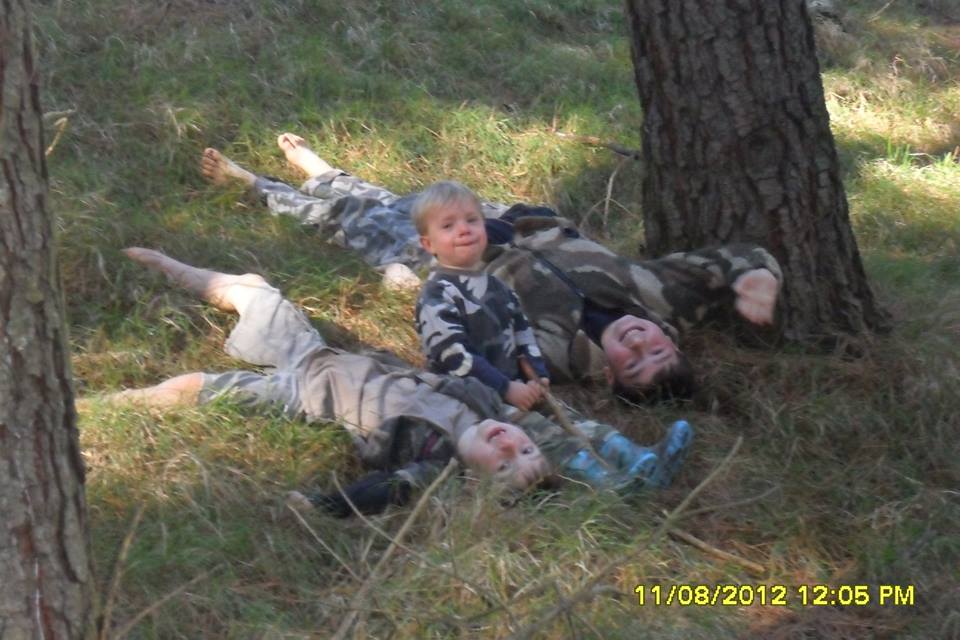
by Karyn Wills | Aug 18, 2014 | Childhood, Life, Motherhood, New Zealand, Parenting, Time
 Almost three years ago, we had the option of buying a big house in town or an apartment sized house on a small block of land. With three boys who had outgrown the space we had in town, we moved to the countryside. It’s been a great move and I feel very at home here. There is space for energy to be burned and huts to be built. There is mud. A lot of mud. There are fruit trees and a small forest. No, there isn’t enough room inside, especially when it’s midwinter and there are more than our family in the house. (Groups of 12 yo boys take up a lot of space!) I have culled and culled and culled and we still have too much stuff for the cupboards. But all in all, I’m pleased I’m here.
Almost three years ago, we had the option of buying a big house in town or an apartment sized house on a small block of land. With three boys who had outgrown the space we had in town, we moved to the countryside. It’s been a great move and I feel very at home here. There is space for energy to be burned and huts to be built. There is mud. A lot of mud. There are fruit trees and a small forest. No, there isn’t enough room inside, especially when it’s midwinter and there are more than our family in the house. (Groups of 12 yo boys take up a lot of space!) I have culled and culled and culled and we still have too much stuff for the cupboards. But all in all, I’m pleased I’m here.
Before the move, one of the things I was dreading was the extra driving I was going to have to do. My boys go to school in a small city 25 minutes from home and I work in the twin small city, 25 minutes drive in the opposite direction.. The boys have friends spread out all around the area, it’s not unusual for me to drive 700km (about 430 miles) in a week and that can equate to a couple of hours each day.
While I don’t mind the actual driving, anticipating what wasn’t going to get done during that time bothered me. And it’s proven to be a justified expectation. There are weeks when the basics are all that get completed. I relish my days when I don’t have to go anywhere and at least some holiday time at home is essential for my mental health. But there has been a major up side to all that time in the car: Time with the boys, either in groups or individually, and time alone.
I get to have one on one time with each of the three boys most weeks; I get to listen to them and their friends yakking about what’s important to them (if you don‘t say anything, you learn all sorts of things); I get to talk to them about life and they get to tell me about life. We laugh, we rant, we sing, we are silly together, we plan what needs to be done when we arrive home. Sometimes we listen to talking books and at other, rare times, there is companionable silence.
I also really value the time I get in the car alone, with my thoughts or listening to cds. I have mentally worked through discussions, organised my day and contemplated the scenery. I have tuned out, sometimes, to the point where the car seems to drive itself.
And, from time with the boys to time by myself, I can see that it’s all been valuable. The silver lining(s), as they say.
Have you ever dreaded something and then discovered that there was magic in the reality of living that experience? How much time do you spend travelling each week?
This is an original post to World Moms Blog by our writer and mother of three boys in New Zealand, Karyn Van Der Zwet.
Photo credit to the author.
Karyn is a teacher, writer and solo mother to three sons. She lives in the sunny wine region of Hawke’s Bay, New Zealand in the city of Napier.
More Posts

by Elizabeth Atalay | Aug 12, 2014 | 2014, Humanitarian, India, Social Good, World Moms Blog
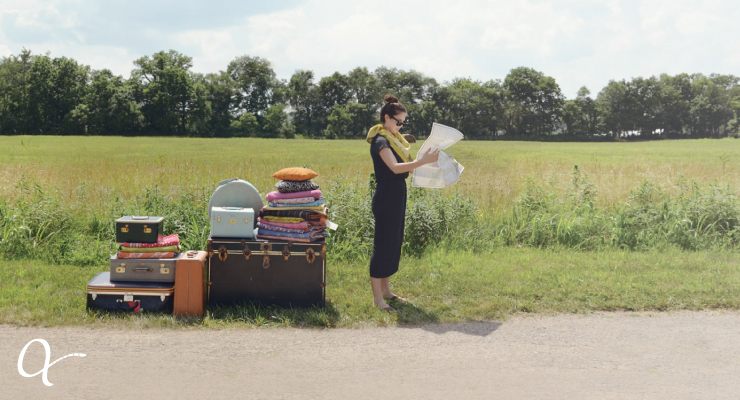
You know when a friend from far away comes to visit? How excited you get to see them again? Well, that is how I feel about the Anchal Road Show that is coming to my town in a few weeks. Anchal is not a person, but it is a story I have followed from early on, and watching the Anchal Project grow over the years has made me feel attached to it in an emotional way. I suppose because it is one of those things that I dreamed of doing someday. Of starting something that matters, that helps others in a substantial way in the way it does.

My Anchal moleskin notebook, circa 2009
I clearly remember my first Anchal encounter at the annual Rhode Island School of Design Alumni holiday sale which I go to every year. It is an amazing sale filled with art, inspiration and creativity from the Alumni of the top art school in our country, and where I always find my favorite gifts to give. (If you ever get the chance to go, go! It is a really special event.) I remember coming across a table that year where they were selling tiny hand painted moleskin notebooks from India as a pilot for the Anchal project. Inside the notebook I bought was a piece of paper with the description of the project, and I was instantly captivated. It was not just a pretty gift to give, it had a deeper meaning and purpose, and those are my favorite types of gifts to give.
Anchal founders Colleen Clines and Devon Miller met as graduate students at RISD studying landscape architecture. You might wonder how landscape architecture turned into textile design, but they shared a belief that design could change lives, and after traveling to India in 2009, they put that idea to practice. What they’ve said about the seminar in which they met is that it…….
“challenged us to think more globally about the role of the designer, ultimately leading us to broaden our title to include social entrepreneur, instigator, collaborator and facilitator. For Anchal, quilt-making is the medium through which we instigate, collaborate, and facilitate economic and personal transformation for the commercial sex workers involved in the project. “-anchalproject.org
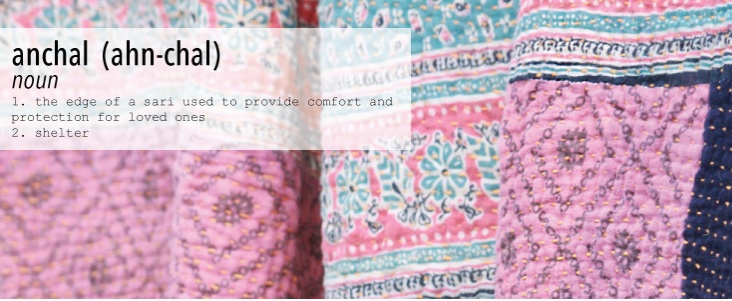
Over the years as the Anchal Project has grown as the women’s lives it touches in India have been transformed. The Anchal artisans are women with little education who come from the margins of society there, the slums, prostitution or the lower caste, many of them are mothers trying to support their families. The decision of these women to enroll in the Anchal program shows their desire for a better future for both themselves and their children. I continue to be inspired by the Anchal Project, and by watching it thrive and impact real, and meaningful change in the lives of the women taking part.
This summer Anchal is taking the show on the road, literally, with the Anchal Road Show that travels to six cities across the USA in Pop-Up shows introducing communities to Anchal and the artists’ stories. This is where my excitement for their visit comes in, as they return to the city where it all began, Providence, Rhode Island, for a Pop-Up show next week. There is something about that now tattered tiny little moleskin notebook that has become somewhat symbolic to me. Like the homecoming of that old friend from your hometown who set off and made it big. I can not wait to see the creations in person and to continue to support this amazing organization. It is truly a story of change-makers in action. Don’t worry if you missed the Road Show, you can still find their beautiful wares at the online store!

Images courtesy of Anchal Project.
This is an original post written for World Moms Blog by Elizabeth Atalay of Documama.

Elizabeth Atalay is a Digital Media Producer, Managing Editor at World Moms Network, and a Social Media Manager. She was a 2015 United Nations Foundation Social Good Fellow, and traveled to Ethiopia as an International Reporting Project New Media Fellow to report on newborn health in 2014. On her personal blog, Documama.org, she uses digital media as a new medium for her background as a documentarian. After having worked on Feature Films and Television series for FOX, NBC, MGM, Columbia Pictures, Warner Brothers, 20th Century Fox, and Castle Rock Pictures, she studied documentary filmmaking and anthropology earning a Masters degree in Media Studies from The New School in New York. Since becoming a Digital Media Producer she has worked on social media campaigns for non-profits such as Save The Children, WaterAid, ONE.org, UNICEF, United Nations Foundation, Edesia, World Pulse, American Heart Association, and The Gates Foundation. Her writing has also been featured on ONE.org, Johnson & Johnson’s BabyCenter.com, EnoughProject.org, GaviAlliance.org, and Worldmomsnetwork.com. Elizabeth has traveled to 70 countries around the world, most recently to Haiti with Artisan Business Network to visit artisans in partnership with Macy’s Heart of Haiti line, which provides sustainable income to Haitian artisans. Elizabeth lives in New England with her husband and four children.
More Posts

by Ana Gaby | Aug 7, 2014 | 2014, Indonesia, Parenting, Younger Children

World Mom Ana’s son
I thought I had been lucky enough to avoid them, I thought we would breeze through, I thought it didn’t run in the family, after all, my older son never had a tantrum. Oh boy, was I wrong. In the past few weeks my 2 year old, Joshua, has revealed a side of him I had never experienced before. The terrible two year old has unleashed and this inexperienced mama is in trouble! Don’t get me wrong, Joshua is still the sweet little guy he’s always been but when something doesn’t go his way, he is prompt to express his discontent. The repertoire includes high-pitched screams, kicks, a few encounters with the floor and a bite here and there.
I keep saying to myself that this attitude is product of our current transition. We recently left Indonesia and are slowly making our way back to Virginia where we will settle down for a while. Everything that Josh knows, his home, his friends, his school, his nanny are no longer here and I sometimes feel guilty for making them go thru this. We are having a wonderful time visiting friends and family however as familiar as grandparents and close friends are, I think Josh is still getting acquainted to his surroundings and feeling a bit disoriented.
I get it, if I was a two-year old with a repertoire of but a few words to express myself I would probably rely on physical manifestations to show my feelings. The part I don’t quite get is how to deal with it sometimes. Since I didn’t get any expertise with my now four year old, Evan, I am a bit clueless as to what to do every time he freaks out sometimes.
I’ve done my research and I’ve found all kids of tips and strategies, ignore the tantrum, distract him, engage him in conversation, hug him, give him a time out, etc. But what I’ve found works best is just to look at him in the eyes with the biggest smile and ask him to use his words and express what is bothering him. The result is a mix of English, Spanish and Bahasa Indonesia that somehow ends up overpowering the cries and anguish this little two year old feels and I get my Joshie back.
To be completely honest, I don’t particularly like this stage; it is frustrating and exhausting and sometimes outright exasperating. But then when I see my energetic two year old run around and make the best of his day, I realize how blessed I am to have such an amazing little man in my life and I choose to make the best of my day and savor every single second of this season in Joshua’s life.
For this family, the world terrible will be banned and even those “terrible” moments will be terrific learning experiences for both him and me. Here’s to savoring the last few moths of Joshua’s terrific twos and to being grateful every day for God’s endless blessings.
Did your kids go thru the “terrible twos”? How did they manifest it? Did all your kids go through them?
This is an original post written for World Moms Blog by Ana Gaby. You can find Ana Gaby blogging at Stumble Abroad.
Photo credit to the author.
Ana Gaby is a Mexican by birth and soul, American by heart and passport and Indonesian by Residence Permit. After living, studying and working overseas, she met the love of her life and endeavored in the adventure of a lifetime: country-hopping every three years for her husband’s job. When she's not chasing her two little boys around she volunteers at several associations doing charity work in Indonesia and documents their adventures and misadventures in South East Asia at Stumble Abroad.
More Posts

by Melanie Oda (Japan) | Jul 31, 2014 | 2014, Cultural Differences, Food, Japan, School, World Moms Blog
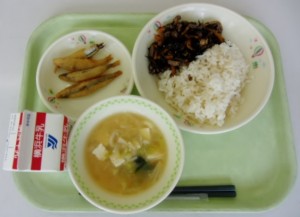
chow_time
I read on the internet a lot about how America is trying to change their school lunch program and make it healthier. And I read a lot about how some people are not happy about this. They complain that kids won’t eat what they don’t like, food gets wasted, etc.
All of that may be true. But I thought I would share what school lunch is like here in Japan.
Children in elementary schools across the country receive a hot lunch every day. The menu is widely varied, with international kid favorites like spaghetti with tomato sauce, the local preference of curry and rice with salad and yogurt, to more traditional foods like fish with miso sauce, vegetable pickles, and wakame seaweed soup. Most days the meals are heavy on vegetables. They include fruit in season occasionally, and maybe once a month or so there is a light desert like jelly (jell-o) or ice cream. Some days they have rice, other days they have bread, still other they have noodles.
And, with a few exceptions, the kids love it!
Why is that?
Part of the reason may be attitude. When my husband was a kid, they didn’t have the facilities to prepare rice and noodles, so he looks at the monthly menu and says “ii na-,” I wish I could have had that! Let’s go back another generation, to my father-in-law. He had bread and milk only every day (ironically enough, he says it was supplied by the occupying US forces,) and he was grateful for it at a time when there may or may not have been dinner waiting for him at home. But- hamburger steak and pickled cabbage with tomatoes? “Ii na!”
In our city, preschoolers, junior high kids, and high school kids have to take their lunch. A bento lunch can be a wonderful thing, but it isn’t hot and doesn’t come with milk.
But perhaps the most important reason is that the kids themselves are involved in food preparation. Each week, half the class is in charge of serving the other half. They carry the pots and trays and multiple little dishes and utensils up to their classrooms, then ladle and scoop and pass the food to each other. When time is up, they clean it up and go have recess.
So if you don’t eat, or you take too long, you make your friends late for recess. That’s quite a motivator there, isn’t it?
Japanese children, in most cases, don’t have the option of taking their lunch if what’s on the menu that day isn’t to their liking. When my son was in first grade, that really bothered me. There were days when he only ate rice, or only ate bread, and I would have been happy to have been able to pack him a sandwich or a banana or something! But after being faced with foods he wouldn’t normally try, day after day, he’s blossomed into quite the adventurous eater. He eats so many different things now. Dinner time is much less of a battle than it used to be, and I think that’s due to the varied and interesting food he gets at school every day.
Do your children have a hot lunch at school? What’s on the menu for chow time?
This is an original post by World Moms Blog contributor, Melanie Oda in Japan, of Hamakko Mommy.
Photo credit to the author.
If you ask Melanie Oda where she is from, she will answer "Georgia." (Unless you ask her in Japanese. Then she will say "America.") It sounds nice, and it's a one-word answer, which is what most people expect. The truth is more complex. She moved around several small towns in the south growing up. Such is life when your father is a Southern Baptist preacher of the hellfire and brimstone variety.
She came to Japan in 2000 as an assistant language teacher, and has never managed to leave. She currently resides in Yokohama, on the outskirts of Tokyo (but please don't tell anyone she described it that way! Citizens of Yokohama have a lot of pride). No one is more surprised to find her here, married to a Japanese man and with two bilingual children (aged four and seven), than herself. And possibly her mother.
You can read more about her misadventures in Asia on her blog, HamakkoMommy.
More Posts

 Motherhood is one of the most beautiful experiences of a woman’s life. Raising children makes life full. I am raising my children in India and I feel that the environment in India helps a lot in inculcating a strong set of values.
Motherhood is one of the most beautiful experiences of a woman’s life. Raising children makes life full. I am raising my children in India and I feel that the environment in India helps a lot in inculcating a strong set of values.

 Hello, world moms everywhere!
Hello, world moms everywhere!













